
Reserve your duck NOW.
We are a small mini-farm and offer ducks on a reservation basis. You must pay $15 to reserve your duck and the balance upon it’s completion in 7-12 weeks. This advance payment helps us off set the cost of raising ducklings and ensures the duck has a purpose.
DISCOUNT – Reserve 1 or 2 ducks on a monthly basis with a 12 month agreement and save $1 off per lb.
Buying a Duck
Here at Trading Feathers – we raise Pekin ducks, the most popular duck breed in the United States. All our meat ducks are free range and harvested between 7-12 weeks which offers lean, succulent, & delicately flavored meat. We like it roasted, but will take it any way we can get it. Meat ducks are $5-7 per lb and processing is offered at no additional cost.
- If weight is measured after the processing, we pluck the duck and the cost is $7 per lb.
- If weight is measured prior to the processing, you receive a LIVE duck and the cost is $5 per lb. (6 lb duck is $30)
- Let us know your preference.
- If you process the duck, we encourage you to practice the native principles of our ancestors and waste nothing. Just remember, Items you are not able to eat can often be eaten by family pets and even bones can be pressure cooked and fed to dogs and cats.
More about Pekins
These are great egg producers, just don’t expect them to sit on a nest. They are the large white domestic duck that Donald was modeled after. Around 95% of duck meat consumed in the United States is Pekin duck, however, Peking duck is a dish (often containing a Pekin duck) on the menu in a Chinese restaurant, not necessarily made from a Pekin duck (but probably).
 Pekins were developed as a meat and egg breed, and broodiness was bred out of them so that they’d lay more. Therefore, if you have Pekin eggs, you’ll need to incubate them artificially, as most Pekin ducks will never sit.
Pekins were developed as a meat and egg breed, and broodiness was bred out of them so that they’d lay more. Therefore, if you have Pekin eggs, you’ll need to incubate them artificially, as most Pekin ducks will never sit.
They are the most common domestic duck – the adults are pure white and the ducklings are a cute yellow. They are a large, hardy breed with excellent egg production if managed properly. Selection by breeders over the years has produced a duck that can often be processed by 40 days of age at a live weight of seven pounds. Yes, they eat and eat, so although their feed efficiency does not match that of chickens, they can still produce one pound of live weight from 2.5 pounds or less of feed. They are heavy, do not fly and are great at foraging.
HISTORY
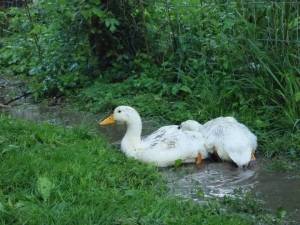
This breed has been farmed since at least 2500 BC in the Beijing (formerly called Pekin) area of China. Pekin ducks in North America are fairly horizontal in stature. Pekins in Europe, however, are very vertical in shape almost Runner in carriage with very short necks. If fed a diet high in corn or alfalfa, the beak and legs in Pekins can become very bright orange in color. As the hen lays, though, she begins to lose that orange color as it is used in the coloration of the yolk of her eggs. Oftentimes you can determine which of your Pekins are laying the best as they will have the lighter, more yellow colored bills. As time goes on, Pekins will often get black splotches on their bill. This is of no harm to the ducks, just a sign of age.
HATCHING
Pekin duck embryos take around 28 days to develop in the egg at 99.5°F (37.5°C) and 50-75% humidity. A heartbeat can usually be seen by the third day of incubation when candling the egg. The eggs must be regularly turned during incubation. Being artificially incubated, the eggs are moved to a “hatcher” three days before they are due to hatch. This has a slightly lower temperature and higher humidity which increases the survivability of the hatchlings while their protective down develops.
Compared with other birds, duck eggs are relatively easy to hatch as they are very forgiving of variations in temperature and humidity.
 FACTS
FACTS
Fully mature adult Pekin ducks weigh between 8 and 11 pounds (3.6 and 5 kilograms) in captivity. Their average lifespan (if not eaten at an early age) is about 9 to 12 years. Their external feathers are white, sometimes with a yellowish tinge. This is more obvious with ducks that have been reared indoors and not exposed to sunlight. The ducks have a more upright stance than dabbling ducks, and possess an upturned rump. The eyes of this duck appear to be black when seen far away, but up-close one sees a grayish-blue colored iris.
An adult Pekin will lay an average of 200 eggs per year if it does not try to, or is prevented from, hatching them. They will normally only lay one egg on any given day. They will lay their eggs in what they consider to be a safe place and will often lay where another duck has already laid (egg dumping). Ducks can be tricked into laying eggs where desired by placing a golf ball or similar object in a place where they might normally lay.
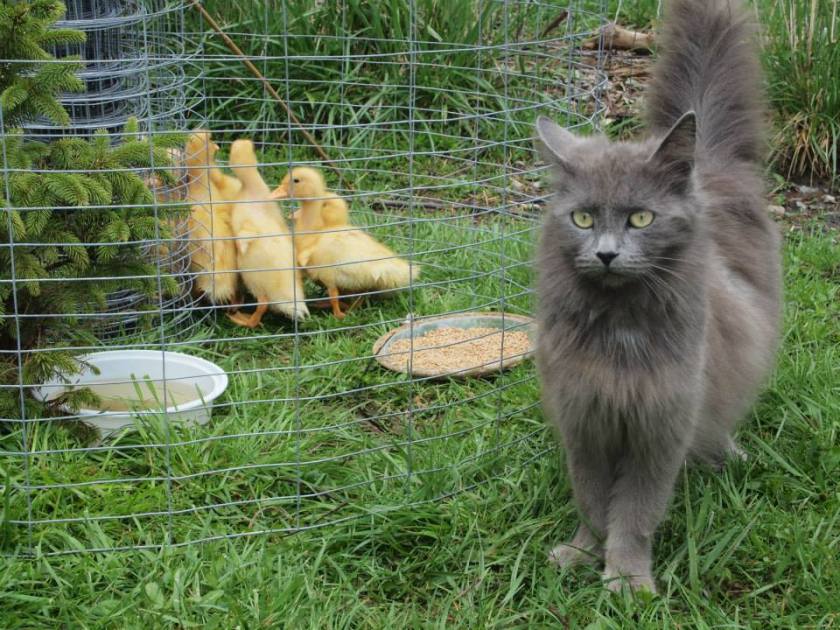
PROCESSING YOUR DUCK
Ducks are normally more difficult to process than chickens or turkeys because they have more down and feathers to contend with. Timing of the harvest will go a long way to saving you countless hours of plucking. You’ll want to harvest when it’s the easiest to get all the feathers out. This is when the feathers are all mature and there are no pin (or immature) feathers, which means at 7, 12-1/2 and 18 weeks of age. If you try to process between these “windows of opportunity” you will encounter large numbers of pin feathers that may double or triple your processing time and effort. If you want succulent young duck, processing at 7 weeks is ideal.
Wet plucking (similar to chickens) is preferable to dry plucking, which is more difficult. Just like chickens, the slaughtered duck is immersed in scalding water that is about 150 degrees and swished around for 3 to 5 minutes allowing the hot water to soak its way through the thick feathers to the skin. If this becomes difficult, add a bit of detergent to the water to cut through the oil in the feathers. If the feathers are still difficult to remove, soak them longer in the water. But, be careful, soaking too long can partially cook the skin, making it more susceptible to tearing during plucking.
Now that the hard part is over, processing your duck from here on out is just like processing a chicken – remove the head and feet, cut out the oil gland from above the tail, loosen the esophagus, eviscerate and wash thoroughly. The only difference between ducks and chickens is that you don’t need to soak your duck overnight like you would a chicken. Once the carcasses have cooled completely they can be packaged for the freezer.
Nutritional Information on Ducks here
Benefits of eating duck here
Barred Rock Chickens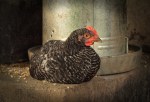 |
Pekin Ducks |
East Indie Ducks |
Black Swedish Ducks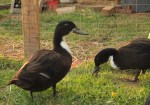 |
Bantams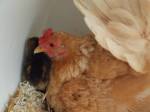 |
Hoppershere
|